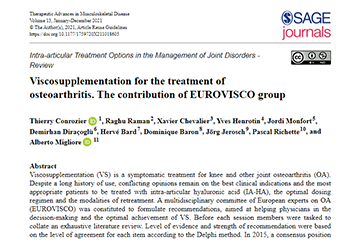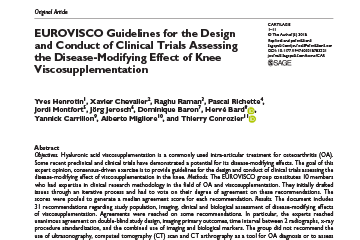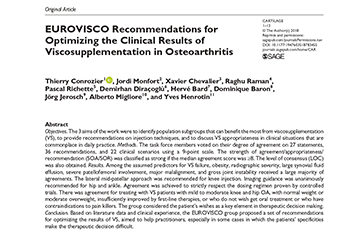
Is the addition of a polyol to hyaluronic acid a significant advance in the treatment of osteoarthritis? Conrozier T. Curr Rheumatol Rev. 2017 Jul 10. doi:10.2174/1573397113666170710115558.
Viscosupplementation with intra-articular injections of hyaluronic acid is recommended as a second line treatment for knee OA, after failure of non-pharmacological modalities and usual pain killers. Nevertheless there is still controversies regarding clinical relevance of its effects.
Research is looking at the best means to improve the performance of viscosupplementation in order to obtain a faster, more sustainable and more marked effect.
Antioxidants have been assessed in combination with hyaluronic acid because the injected hyaluronate is rapidly degraded by the reactive oxygen species present in large amounts in the OA synovial fluid, limiting its residence time into the joint. Sorbitol and mannitol which have intrinsic free radical scavenger properties have been the most studied antioxidants.
- Sodium hyaluronate and polyols develop together a complex based on a dense network of hydrogen bonds that do not modify the visco-elsatic properties of hyaluronic acid.
- The oxygen free radicals neutralization by mannitol has been proven to delay the degradation of both linear and cross-linked HA in several in vitro models of oxidative stress.
- The antioxidant effect of these polyols may also play a role in accelerate onset of analgesia, as demonstrated in a double blind controlled trial comparing a mannitol-modified viscosupplement to regular hyaluronic acid.
- The addition of mannitol and sorbitol to hyaluronic acid does not alter the safety and local tolerability.
To conclude, adding a polyol to hyaluronic acid may improve the effects of viscosupplementation, by reducing the rate of degradation of HA that leads to an earlier effect on pain relief without increasing the risk of adverse effect.
.
.




